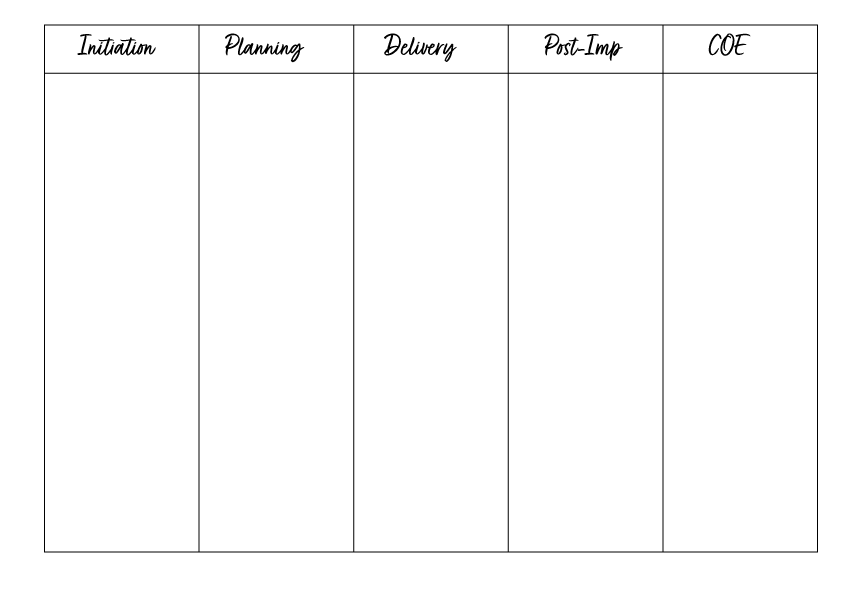You can find all our articles and past events
Free Articles | Inside PMO | PMO Conference | PMO Book Shelf
PMO Career Hour – PMO CV

Writing a CV is a life skill and like any skill, you can help develop it with a little help.
The PMO Career Hour session in this article focuses on the PMO CV and members in this session wanted help in these kinds of areas:
- Tailoring my CV to suit different types of PMO roles
- Interested in picking up pmo specific CV writing techniques
- Evidencing PMO experience and showing one size does not fit all – how best to showcase the expertise
- I’ve not done a CV for many years. I wouldn’t know where to start with a CV!
- Marketing myself in the right way
The session wasn’t recorded live (for privacy) but in the recording below we share the deck which was used throughout.
What We Focused On
We looked at two core areas:
- The two most important parts of the CV – the profile and the career history.
- Using a competency framework can help you decide what to put on the CV.
The Profile and Career History
After years of looking at PMO CVs – and seeing the difference between the good ones and the not-so-good, one of the things that stood out was a very clear profile that introduces you and keeps it factual with lots of great keywords (which are still one of the ways that recruiters find people in their databases)
We shared the formula that can be used to create a very clear profile.

With the Career History, a simple formula is not going to work as well but there are some insights we can learn from well constructed CVs.
First up is when we introduce our roles.

It’s always good to do a proper introduction to the organisation where you’ve been working – regardless of how well known that company is. It’s also important to give some context that allows people to see where in the business you’re working and in what kind of PMO.
You should also consider giving some context to the project, programme or portfolio you are working in too – help people understand if it’s a large programme – what is the budget like, how many people are working on it etc. When you give the context, the tasks and activities you go on to highlight in your CV will be viewed in a different perspective by the reader. It’s a good way to also demonstrate your level of seniority too – the more complex or complicated an environment, your roles and responsibilities will be viewed in a different light.
We went on to share the three different ways of presenting the career history:



The service one is pretty clear and easy for the reader to pick out specific PMO service areas. We’ve found that more and more PMOs are becoming service led so why not consider laying out your roles and responsibilities in such a way?
Using a Competency Framework
When it comes to writing parts of the career history we can think and reflect back on what we’ve done in a number of different ways.
I’ve always thought that competency frameworks are handy for showing us what is expected in terms of the different areas (competences) plus the knowledge, skills and behaviours.
We can use the competency framework as a prompt. Let’s take a blank piece of paper and divide it up. I’m choosing the core competences that I’ve used in my role and against each one I’m just going to write down the different tasks and activities I’ve done against each.
Top tip: the notes you make here will not only help to create the bullet points in a CV, you can also use them for interview preparation – to remind you of the situations you might want to talk about in your interview answers.

Another option is to think about your project or programme lifecycles. Take a blank piece of paper again, this time, the lifecycle stages are across the top and you can think about your tasks and activities at the different stages:

Top tip: there is a third way and that’s the think about your timetable. What do you do on a weekly, monthly, quarterly and yearly basis? Again you can write down the types of things you do and then cross-reference it against the other two ways and see if you’ve missed anything.
Using the Indicators in the Competency Framework
The indicators in the competency framework are useful too. The indicators are intended as examples of tasks and activities you might perform at a certain level to demonstrate competency.
See below, this is an example – it’s the Stakeholder Engagement competency at an intermediate level and within a project context.
We can look at the indicators and see if there are any examples of things you might have done yourself. Reading through them can act as a prompt – or a reminder.
For example, it mentions frameworks, processes, procedures and tools. Do you include any of these within your CV when highlighting your stakeholder engagement experience?
Using a competency framework can certainly help make sure you’re covering the right areas in your CV and the indicators can help you think about how you might write them.


